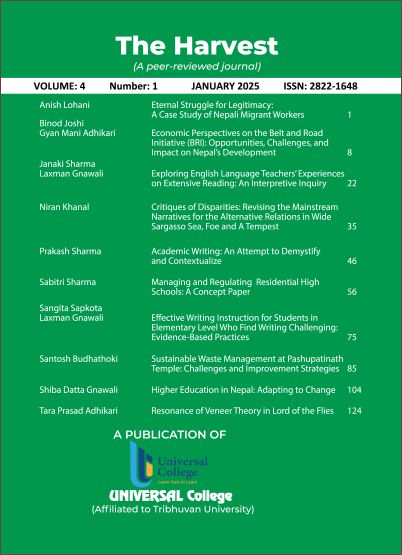Resonance of Veneer Theory in Lord of the Flies
DOI:
https://doi.org/10.3126/harvest.v4i1.75359Keywords:
veneer theory, human nature, civilization vs. savagery, symbolism, inherent evilAbstract
This article “Resonance of Veneer Theory in Lord of the Flies” explores how William Golding's Lord of the Flies depicts the tension between natural human instincts and the civilizational forces. The novel presents a case on human nature, aligning with the veneer theory. The idea is that beneath the thin facade of societal order lies the potential for savagery. Drawing on the philosophical insights of Thomas Hobbes, Jean-Jacques Rousseau, and Friedrich Nietzsche, the article examines how the novel excavates human beings’ descent into savagery. Hobbes's notion of the "war of all against all," Rousseau's critique of societal degeneration, and Nietzsche's "will to power" provide a theoretical framework for this study. The article argues that the novel critiques the illusion of innate human goodness. By drawing parallels with religious mythology and contemporary power dynamics, the article highlights the relevance of Lord of the Flies in understanding the delicate balance between order and chaos in human societies.




